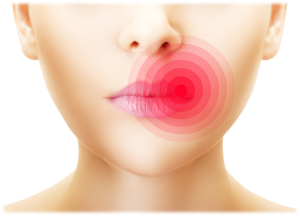What is the oxidative stress status in patients with recurrent aphthous stomatitis?
 This summary is based on the article published in Clinical Oral Investigations: Oxidative stress and recurrent aphthous stomatitis (November 2014)
This summary is based on the article published in Clinical Oral Investigations: Oxidative stress and recurrent aphthous stomatitis (November 2014)
Jose Bagan, Guillermo Saez, Carmen Tormos, Carmen Gavalda, Jose M. Sanchis, Leticia Bagan, Crispian Scully
Context
- Recurrent aphthous stomatitis (RAS) is a common oral condition, with no well-established underlying cause 1, 2. Management is mainly based on anti-inflammatory drugs 9, 10.
- Oxidative stress is the imbalance between the amount of reactive oxygen species (ROS) within the cell and the ability of the cell to remove these reactive peroxides and free radicals.
- Although there are reports on oxidative stress (OS) in RAS 11–16, there have been no analyses of the OS in RAS within the same patients in the presence and absence of ulceration.
Purpose of the Study
To analyze the oxidative stress status in patients with recurrent aphthous stomatitis (RAS) in the presence and absence of active ulceration.
Key Messages
- The study found higher malondialdehyde (MDA) and oxidized glutathione (GSSG) levels, with a decreased glutathione (GSH)/GSSG ratio, implying the presence of oxidative stress in our patients with RAS.
- Another significant and novel finding was the higher MDA and GSSG levels on days when patients had lesions compared with the periods without ulcers.
- The study found a trend to increased MDA and GSSG levels in the presence of the more aggressive RAS lesions (major aphthae).
- Under normal conditions, there is a balance between the production of ROS and the capacity of the cell to reduce or eliminate them. When the production of reactive species predominates, oxidative stress results give rise eventually to cell death.
- In the last 15 to 20 years, nothing really new has changed in this common oral condition. Clinicians, continue to seek to better understand the causes or pathogenic processes involved in RAS. In this respect, the study and its preliminary results report that these oxidative stress findings may be involved in the etiopathogenesis of RAS.
References

thanx for this beautiful and informative article. I was looking for a scientific and convincing etiology for RAS that your study made my way easier. well i may ask you if RAS has any relation with autoimmune diseases?
best regards and thanx again.